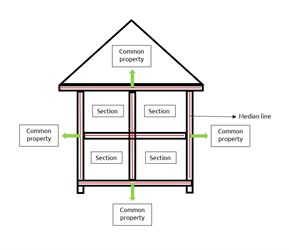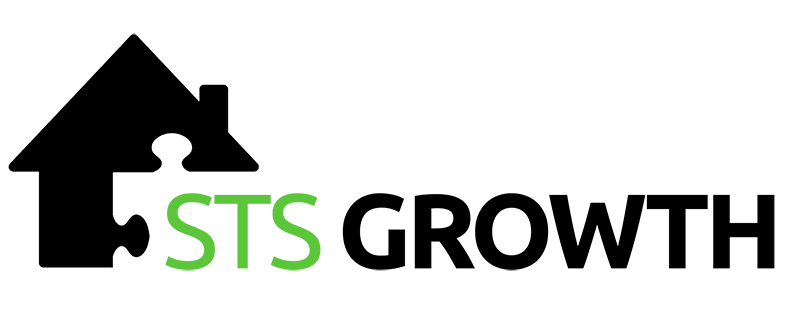Who foots the bill?
Some of the main reasons people invest in property in community schemes are the convenience and cost-effectiveness of shared responsibility and costs. However, who pays for what maintenance and repairs also result in some of the most heated debates regarding sectional title schemes (“schemes”).
As with any community, being a member of a community scheme requires adherence to specific rules and responsibilities for the community to function optimally and even thrive. Unit owners, trustees and managing agents need to educate themselves on the relevant regulation and the duties and obligations required from them.
The governing legislation and rules of schemes which will be referred to in this post includes the following:
- The Sectional Titles Act (“STA”);
- The Sectional Titles Schemes Management Act (“STSMA”);
- The Prescribed Management Rules (“PMRs”) of the STSMA Regulations;
- The Prescribed Conduct Rules (“PCRs”) of the STSMA Regulations; and
- The Community Schemes Ombud Service Act (“CSOS Act”).
Schemes consist of the following;
- Primary and utility sections;
- Exclusive use areas (“EUAs”); and
- Common property.
Primary and utility sections
A section is a part of the development that is exclusively owned by a person and can be broken down into two categories:
- Primary section: a section designed to be used for human occupation as a place of residence, office, shop, factory, or any other type of use allowed in terms of local municipal by-laws.
- Utility section: a section designed to be used as an accessory to a primary section, such as a bathroom, toilet, storeroom, workshop, shed, staff quarters, parking garage, parking bay or another utility area.
EUAs
A EUA is a defined portion of the common property set aside for exclusive use by a particular unit owner or a particular group of unit owners. You may buy and become the holder of exclusive use rights that allows you the sole rights to use, enjoy and occupy a specific part of the common property, such as a parking bay, carport, yard or garden area.
Common property
Common property consists of everything that is not in a section. In other words, all the land and parts of the property that do not form part of a section. The question of where the primary section starts and the common property ends is often the cause of much of the confusion about the responsibility for maintenance and repair costs.
To clarify the boundaries between a primary section, other primary sections and common property, Section 5(4) of the STA refers to a median line:
“The common boundary between any section and another section or common property shall be the median line of the dividing floor, wall or ceiling, as the case may be.”
Median line
Basically, the median line means the middle of a wall, floor or ceiling.

Common property starts on the outside of the median line that is not adjacent to another section, and will therefore include:
- The area under the median line of the floor of the building, including all the foundations;
- An area outside the outer wall of a section that does not form a boundary with another unit — the outer shell; and
- The area above the median line of the ceiling, including the roof.
The responsibility for maintenance and repairs will depend on which side of the median line the work is required. In effect this would mean that all costs incurred within the median lines in the primary sections are for the unit owner’s account, all costs for areas outside of the median line are for the body corporate’s account.
Although the concept of the median line may appear to simplify the matter and provide absolute clarity between the common property (for which the body corporate would be responsible) and the primary section (for which the unit owner would be responsible), there are still some areas of uncertainty.
Windows, doors and other structures
Although the STA clarifies the boundaries between sections and common property, what does this mean for windows, doors and other structures which may cross the median line, and may form part of the boundary between a section, other sections and/or common property?
Section 5(5)(a) of the STA was amended in 2011 so that the definition of the boundaries of a section included the following:
“by reference to the floors, walls and ceilings thereof, or as may be prescribed: Provided that any window, door or other structure which divides a section from another section or from common property, shall be considered to form part of such floor, wall or ceiling;”
In other words, half of the windows, doors and other structures on the inside of the median line forms part of the section, while the half outside will form part of the common property. Where windows, doors and other structures are shared between the primary section and common property, maintenance and repair costs are shared equally between the unit owner and the body corporate. Should these be shared between two sections, maintenance costs would be split equally between the two sections.
Water leaks
Water leaks can occur in the walls, foundations and roofs. As roofs are located above the median line in the ceiling, repairs to water leaks originating from roofs are the responsibility of the body corporate.
A slab separating a top and bottom unit is not common property, and the body corporate is therefore not responsible for the repair and maintenance thereof. The median line running through the middle of the slap separates the two sections with the area above the line being the responsibility of the owner of the top section, and the area below the line that of the owner of the bottom section. However, if a leak occurs because of a leaking bath, shower, pipes or some other reason in the top section, the owner of the top section would be liable for maintenance and repair costs for damages in the bottom section as the leak emanated from their section.
The body corporate is responsible for damages inside the section resulting from water seeping in from the common property. Maintenance and repair of a water pipe within a wall serving more than one section or the common property is also the responsibility of the body corporate. However, if a water pipe supplies hot water to a section or sections, the maintenance and repair would be the responsibility of the owner/s. If a leak between sections results in damages in one of the sections, the owner of the section from which the leak originates would be responsible for the costs.
Foundations and floors
Foundations are under the median line of the floor, and are therefore common property and the responsibility of the body corporate. Faulty foundations can be due to sinking or settling of the ground underneath the foundation, and can result in damaged and cracked concrete slab floors. This is the responsibility of the body corporate and should usually be covered by the subsidence cover in the body corporate’s insurance. If the problems with the foundations are causing damage within a section, the owner would most likely only be able to hold the body corporate responsible should they be able to prove that the body corporate was aware of the faults and neglected to repair it.
Should the problems with the foundations however be due to poor construction work, the developer and/or builder could be held liable.
Geysers
Geysers (or any other hot water installations) often result in the most confusion when the question of who is liable for maintenance repair costs arises. As geysers are located above the median line of the ceiling, it is commonly assumed that they are the responsibility of the body corporate. However, although this would be true in the event of a burst geyser, which should be covered by the body corporate’s insurance, the maintenance of a geyser is the owner’s responsibility.
Any repairs as a result of a lack of maintenance of pipes, the geyser itself, or other related apparatus, would be for the unit owner’s account. An owner could claim the costs for the replacement of a geyser from the body corporate insurance (should the policy make provision for this), but would be responsible for paying the excess.
Security
The body corporate is responsible for maintenance and repair costs of security gates, electric fences and security cameras at the entrance, and on the perimeter of the scheme and common property. However, a unit owner would be liable for any damages caused by themselves.
Who would be responsible for the repair of a door and security gate at a section in the event of burglary for instance? As we’ve discussed previously, the owner and body corporate share 50/50 responsibility for doors where the median line is generally accepted to run through the middle of it.
Should an excess be payable for an insurance claim, the costs will be split equally between the owner and the body corporate.
Damage to Common Property is the subject of PCR 4 of the STSMA Regulations. PCRs 4(2) and (3) state the following concerning doors and the installation of security gates:
“(2) An owner or occupier of a section must be considered to have the trustees’ consent to install a locking or safety device to protect the section against intruders, or a screen to prevent entry of animals or insects, if the device or screen is soundly built and is consistent with a design, colour, style and materials approved in writing by the trustees.
(3) The owner or occupier of a section must keep a device installed under sub-rule (2) in good order and repair.”
In other words, the owner needs the body corporate’s consent to install a safety gate, and is responsible for the maintenance and repair thereof. Should there be an excess payable following damage to the gate as the result of a burglary, the owner would be responsible for the full amount of the excess.
Pest control
The body corporate is responsible for pest control on common property that does not constitute a EUA. According to PCR 8 of the STSMA Regulations, the section owner is responsible for pest control within a section or an area they have exclusive use rights to. Should the owner not take action to eradicate pests within a section or exclusive use area, the body corporate has the right to inspect the section, take action and claim the costs from the owner.
Damages
According to the STSMA, the Body Corporate is obliged to maintain the common property in a complex. However, the STSMA only deals with responsibilities for the maintenance and repair of areas within the scheme, not with responsibility for damages resulting from a failure to keep an area maintained and in a state of good repair.
Should either the body corporate or the unit owner fail to maintain or repair their areas of responsibility, the other party would be able to lodge a dispute with the Community Schemes Ombud Service (CSOS). Section 38 of the CSOS Act makes provision for a person materially affected by a dispute to approach CSOS with an application stating the required relief sought concerning the prayers of relief included in section 39.
This post only provides a brief outline of the liability of respective parties for maintenance and repair costs in a sectional title scheme. However, the interpretation of, and compliance with technicalities of the regulations often result in contentious and complicated issues.
The STSMA Regulations provide default rules regarding the duties and obligations of different parties in a community scheme, but the body corporate’s amended management and/or conduct rules may also have a bearing.
Find out more about our legal advisory services or contact us if you need help to take the complexity out of community scheme living.





